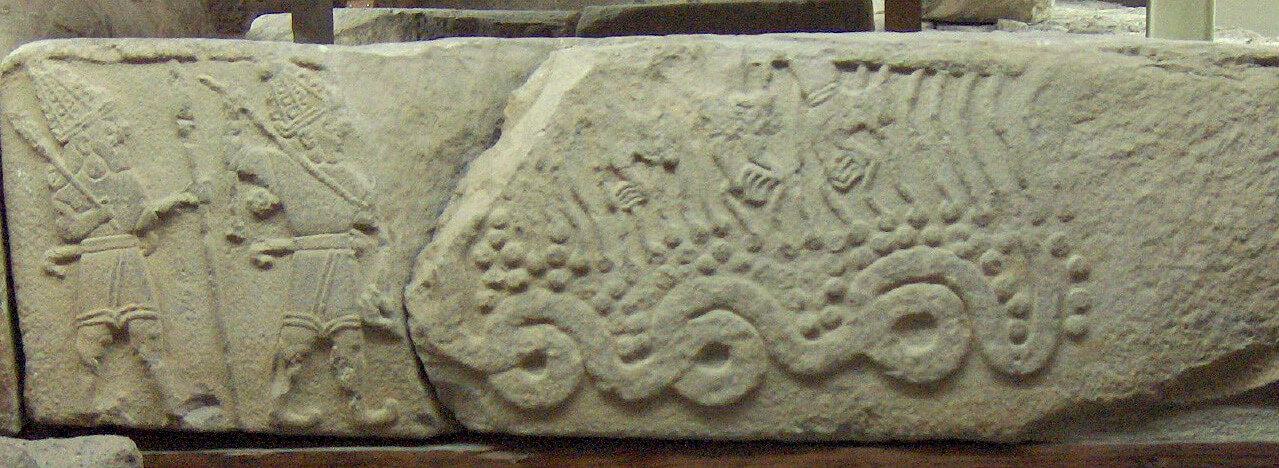Who was Illuyankas? The legend, story, history of Illuyankas. The role of Illuyankas in the Hittite Mythology.
Illuyankas; Comparable to the victory of the Babylonian Marduk over Tiamat is the Hittite myth of the weather god as the slayer of the dragon Illuyankas personifying the forces of evil. There are two versions of the legend. In the older tale, Illuyankas overcame the weather god, but the goddess Inaras prepared a trap for the dragon. She spread a feast- ‘wine by the barrel, fruit juice by the barrel, other drinks filling every barrel brim full’ -and obtained the help of aman named Hupasiyas, who was her lover.

The sky god kills the dragon Illuyanka. Behind him is his son Sarruma. The twisting body of the snake is depicted in undulating lines with human figures sliding along Museum of Anatolian Civilizations, Ankara, Turkey
Illuyankas and his children ate and drank until they were no longer able to return to their lair. Then Hupasiyas trussed them up with strong cord and the weather god slew thern. For Hupasiyas the goddess built a special house, but instructed him not to look out of the window lest he see his wife and children. Hupasiyas disobeyed the command, saw his mortal family, and asked to return home: so Inaras killed him.
According to the later version, the dragon took away with him the heart and eyes of the weather god when he vanquished him in order to recover them the weather god begot ason, whom he married to the daughter of Illuyankas. This young man asked his dragon bride for the missing organs and was able to give them back to his father. Restored, the weather god killed Illuyankas, and, at his own request, his own son, who like the Egyptian Horus had revitalized him.
Both stories relate to the West Asian therne of the dying and reviving fertility god. Echoes of this fundamental myth in Europe are plentiful and appear in the springtime ‘processions of dragons. As late as this century at Ragusa, in Sicily, an enormous effigy of a dragon, complete with moveable tail and eyes, was paraded on St George’s Day.
The role of Illuyanka in the Hittite Mythology
In Hittite mythology, Illuyanka is a serpentine dragon or giant sea serpent who battles the storm god, Tarhunt (also known as Teshub or Tarku). The story of Illuyanka is one of the most important myths in the Hittite pantheon and has been found in several versions on cuneiform tablets dating back to the Hittite empire (1600-1200 BCE).
The myth describes how Illuyanka steals the divine powers of the gods and makes himself the ruler of heaven and earth. Tarhunt is sent to battle him and, after a fierce fight, is able to defeat him and restore order to the universe. In some versions of the myth, Tarhunt is aided by the mortal hero Hupasiyas, who helps him kill Illuyanka by cutting off his head.
The story of Illuyanka has been interpreted in different ways by scholars. Some see it as a metaphor for the conflict between the forces of chaos and order, while others view it as a symbolic representation of the natural cycles of the seasons and the yearly renewal of life. It has also been suggested that the myth may have originated as a political allegory, with Illuyanka representing a tyrannical ruler who is overthrown by a more just and virtuous leader.
Regardless of its exact meaning, the myth of Illuyanka was a central part of Hittite religious and cultural life, and was likely used to explain the workings of the natural world and the relationship between gods and mortals.